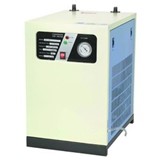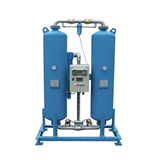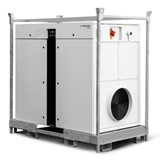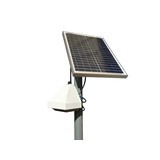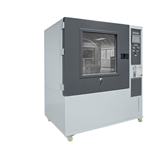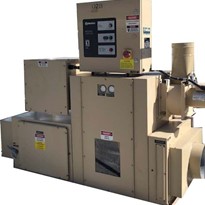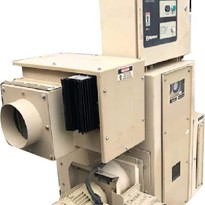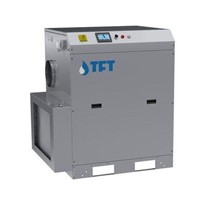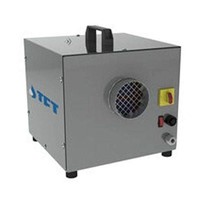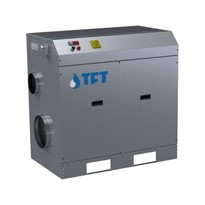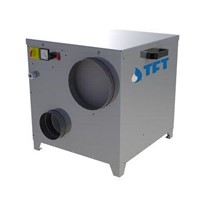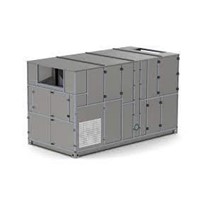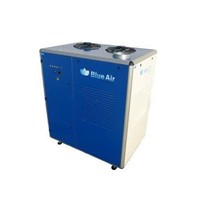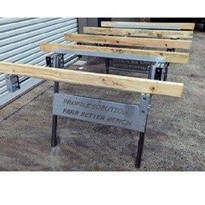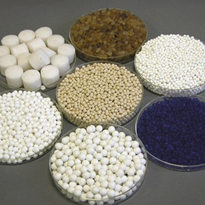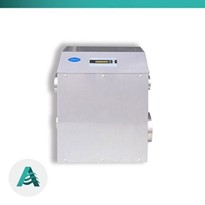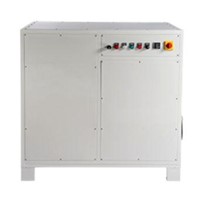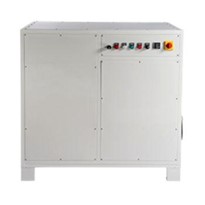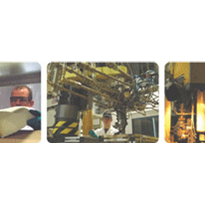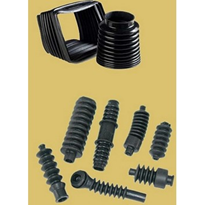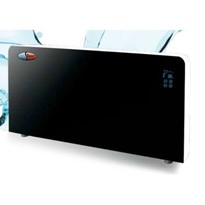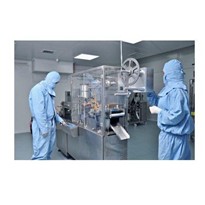Synthetic greenhouse gases (SGGs) are now widely used as refrigerants in dehumidifiers, fridges and air-conditioning units. However,
desiccant type dehumidifiers contain no refrigerant gas
Instead of drawing moist air over a refrigerated coil with a fan like most residential and commercial type dehumidifiers, desiccant dehumidifiers work by passing air through a rotating silica gel sieve to exact moisture from the air. Desiccants such as silica gel naturally absorb moisture -- that's why you'll find little packets of silica gel in new shoes or electronic goods. As the sieve rotates, a small portion of the wheel is used to reactivate the wheel. In this portion the silica gel is heated so the the moisture is released and is then ducted out from the dehumidified space.

Not only are desiccant dehumidifiers offer better humidity control, more efficient latent load removal, and reduction of peak electric demands, they also contain no refrigerant gas!
Therefore there is no risk of gas leaking into the atmosphere and causing ozone depletion
Some more information on the environmental effects of refrigerant gas below...
OZONE DEPLETING REFRIGERANTS
The ozone layer absorbs harmful ultraviolet radiation from the sun. Ozone depleting refrigerants damage this layer, which results in increased levels of sunburn and skin cancer.
Ozone depleting refrigerants fall into the following categories
-
Chlorofluorocarbons (CFCs)
-
Hydrochlorofluorocarbons (HCFCs)
-
Halons
-
Hydrobromofluorocarbons (HBFCs)
-
Carbon tetrachloride, and
-
Methyl chloroform.
SGG REFRIGERANTS
SGGs contribute to global warming because they trap heat in the atmosphere. This is reflected by their very high global warming potentials, which are a measure of how much heat a gas traps in the atmosphere compared to carbon dioxide.
You must not knowingly or without lawful reason release SGGs into the atmosphere while installing, operating, servicing, modifying, dismantling, or disposing of any refrigeration or air-conditioning equipment or other heat transfer medium.









